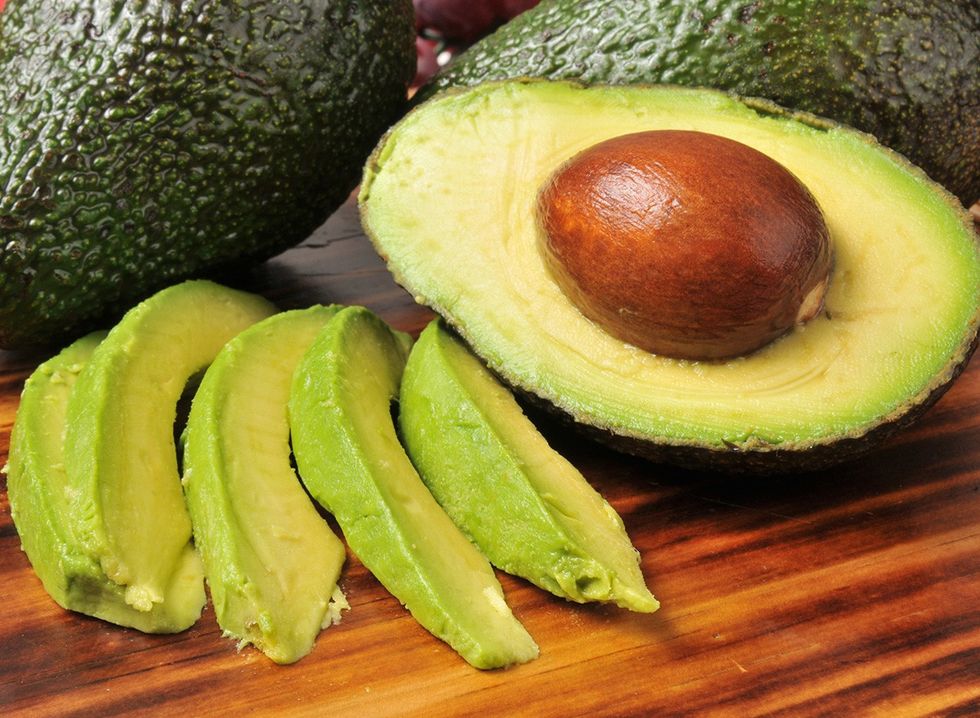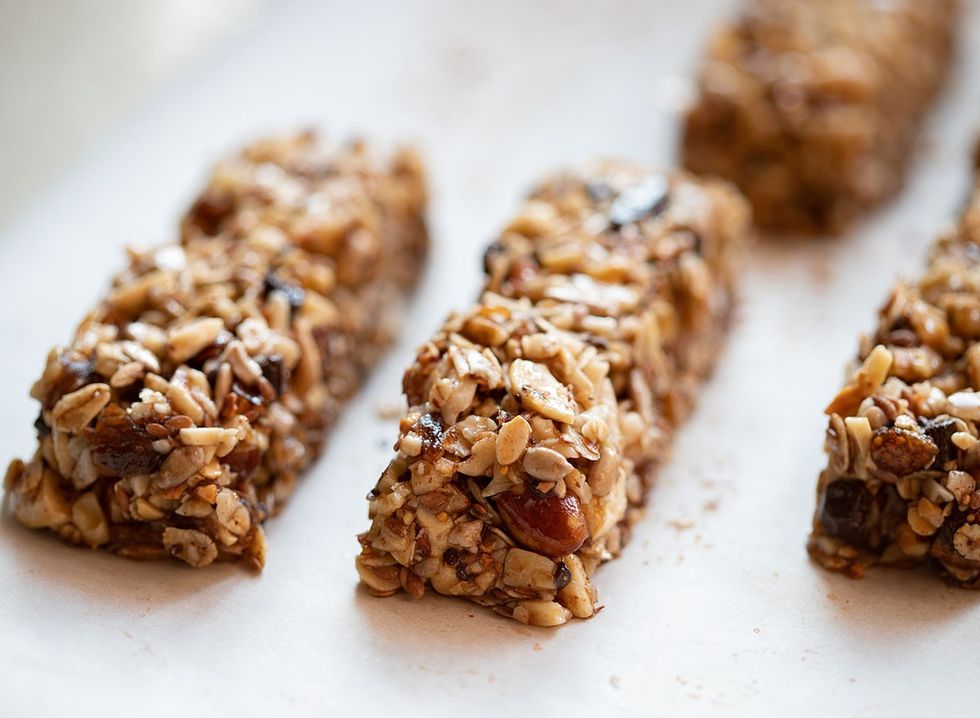Just because you are eating “healthy” food, doesn’t mean you are going to lose weight. In fact, some of the most nutrient dense foods can make you pack on the pounds. Jillian Michaels, fitness expert and star of The Biggest Loser, has made a name for herself for being one of the candid health experts on the planet. In a recent viral video she reveals the shocking reason you might not be losing weight. “Can healthy foods make you gain weight? Yes, of course they can. Absolutely, they can. Shocking, I know. I'm gonna explain how, why and what the top offenders are in this video,” she says.
A Lot of People Are Confused Why They Can’t Lose Weight While Eating Healthy
“So a lot of times people will come to me and say, ‘I'm stuck. I can't lose weight. I plateaued’. So I'll say, ‘All right, you know, what are you eating?’ And they go, ‘I'm eating healthy.’ What does that mean? What does eating healthy mean? You're eating healthy foods,” she says.
Foods Have Nutrients

She explains that she is going to discuss two different components of food. One is, what makes a food healthy? “Well, in general, we're looking for nutrients, right? So you have micronutrients, which are vitamins and minerals, but you can also be looking at antioxidants, polyphenols, fiber, water, content. There's a host of great stuff. Some foods have probiotics, really good, healthy bacterial strains that benefit us in a myriad of ways that can be considered a healthy food,” she says.
But, Foods Also Have Calories

Foods also have calories. “So calories as I've mentioned, are units of energy, right? So fat, the stuff that gets stored in our fat cells is essentially stored energy. Now, I'm not talking about what it does in the body, but how it gets there, it's stored energy, right? So again, you know the whole, you know the whole story. You wanna lose body fat, you gotta consume less energy and put out more energy to dig into your energy stores, which are those fat cells,” she says.
Healthy Foods Can Become Unhealthy in Excess
“There are plenty of healthy foods that can make us gain weight and ultimately to a certain extent, become unhealthy if we're not mindful of how calorie dense they are and if we overeat them,” Michales continues.
1. Nuts

One of the “top offenders,” according to Michaels? Nuts. While a handful isn’t bad, “if you think about it, I think it's something like nine cashews or like 140 calories.” And, many are roasted in oil. “Really, really be mindful of nuts and seeds. They're great for you, loaded with healthy fats, loaded with fiber, loaded with vitamins and minerals, but if you eat too much of it, they can absolutely make you gain weight.”
2. Juice

“We think of this stuff as being super healthy, but juice,” she says about the second offender. “I see people cruise through juice places and get these monster juices and even smoothies for that matter. Like if I have a smoothie, it's a meal, it's breakfast, it's lunch or a half serving for a snack. This stuff is loaded with sugar and loaded with calories, both of which can make us overweight. So it takes a lot to shift your hormones and your biochemistry, which impacts your metabolism,” she says. While she maintains that “juice is bad,” she does recommend eating fruit and veggies instead of drinking them.
3. Fruity Yogurts

Third on her list? fruity yogurts. “So yogurt is a great food. It's got protein, vitamins, minerals, probiotics, some of those good bacterial strains,” she says. “But if you consume some of those, like cherry, strawberry, all that stuff with the fruit on the bottom, it's usually like absolute garbage, high fructose corn syrup, artificial colors, tons of preservatives, not organic fruit, like it's just, again, a bunch of sugar in a bunch of crap that you don't need. So when you go to have yogurt, have organic, have low fat.” She also recommends organic, “so we don't get any of the garbage that can go into dairy that we don't want, like hormones and antibiotics and add fresh fruit.”
4. Granola

Next up, granola. “You don't need it,” she says. While she might sprinkle a little on her smoothie bowl, “it's not the kind of thing that you should be throwing into smoothies or smoothie bowls.” Why? “It's extremely high in calories, high in sugar and high in fat. And fat is not a bad thing. But when we overconsume it, because it's so calorie dense, it's so energy dense, it can make us gain weight. It's not fat that makes us gain weight, it's the calories. But if a gram of fat is nine calories, right? And a gram of protein is four calories and a gram of carbohydrates is four calories, fat is over two times the amount of calories, twice as much energy.”
5. Avocado

The last one, “absolutely beloved, but really high end calories is an avocado,” she says. “Depending upon the size of that sucker, those things can get up to 600 calories in avocado. I don't know about you, but I could dust an avocado in one sandwich or one salad. That's a lot of calories for an avocado. So it's great for you, but half, half, half of an avocado no more,” she suggests.
Her Final Advice? Be Mindful
Her final note? “Be mindful,” she says. “Don't overeat anything. You can look at bears. What's that guy eating all day long? Wild salmon, berries and plants and twigs and figs. And yet these animals can pack on enough fat to not eat for months at a time. Healthy food can make you fat. Just don't overeat it.” And if you enjoyed this article, take advantage of these 15 Quick Ways to Lose Body Fat Percentage in a Week.














 27. Regular YogurtShutterstock
27. Regular YogurtShutterstock Shutterstock
Shutterstock Shutterstock
Shutterstock A Day of Measured EatingShutterstock
A Day of Measured EatingShutterstock
 Shutterstock
Shutterstock Shutterstock
Shutterstock Shutterstock
Shutterstock Shutterstock
Shutterstock Shutterstock
Shutterstock Shutterstock
Shutterstock Shutterstock
Shutterstock Shutterstock
Shutterstock Shutterstock
Shutterstock Shutterstock
Shutterstock


 Shutterstock
Shutterstock Shutterstock
Shutterstock Shutterstock
Shutterstock

 I'm a Nutritionist and These 9 High-Protein Snacks Keep My Clients Full While Losing 50 Pounds
I'm a Nutritionist and These 9 High-Protein Snacks Keep My Clients Full While Losing 50 Pounds
 Shutterstock
Shutterstock 2. Processed FoodsShutterstock
2. Processed FoodsShutterstock Shutterstock
Shutterstock Shutterstock/Prostock-studio
Shutterstock/Prostock-studio Shutterstock
Shutterstock Pro TipsShutterstock
Pro TipsShutterstock Shutterstock
Shutterstock Shutterstock
Shutterstock Shutterstock
Shutterstock Shutterstock
Shutterstock Don’t Drink as Much AlcoholShutterstock
Don’t Drink as Much AlcoholShutterstock Most Women on GLP-1s Are Making a Few Common MistakesShutterstock
Most Women on GLP-1s Are Making a Few Common MistakesShutterstock Soda and Sugary DrinksShutterstock
Soda and Sugary DrinksShutterstock Shutterstock
Shutterstock Eat BreakfastShutterstock
Eat BreakfastShutterstock And Improve Insulin SensitivityShutterstock
And Improve Insulin SensitivityShutterstock Belly Flab Strip Tip: Sugar and Fat Calories Leave Its Mark on Your BodyShutterstock
Belly Flab Strip Tip: Sugar and Fat Calories Leave Its Mark on Your BodyShutterstock Shutterstock
Shutterstock The Drugs Mimic the GLP-1 Hormone Naturally Produced by the BodyShutterstock
The Drugs Mimic the GLP-1 Hormone Naturally Produced by the BodyShutterstock